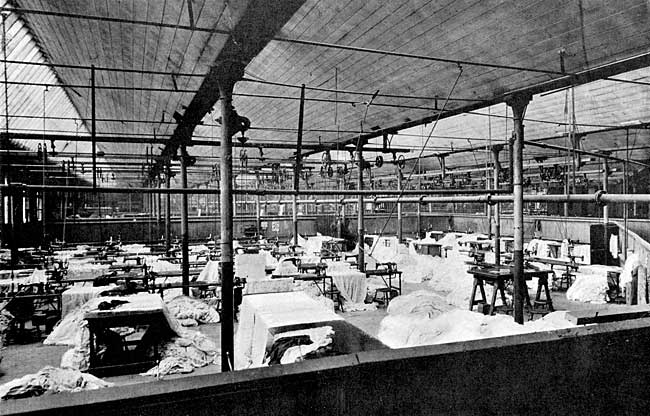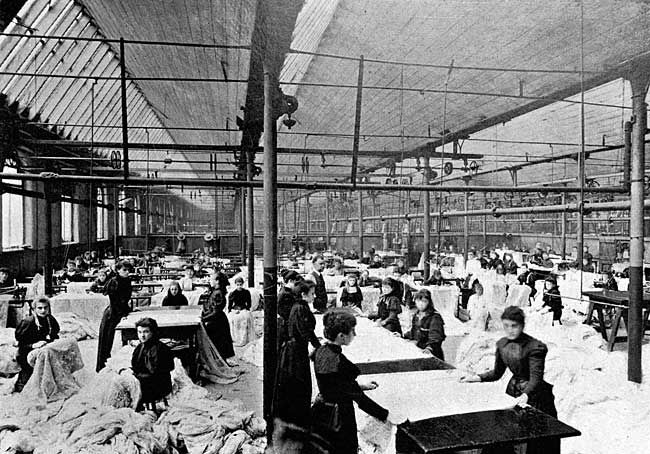< Previous | Contents | Next >

Mending Department, Glasgow, without Girls.
The carriages in which the brass bobbins are fixed prior to being placed in the machine are circular on the bottom, as will be seen by reference to the illustration. These carriages ride in two sets of brass combs which are cast in leads of 2in. or 3in., so many to the inch according to the gauge, and which are fastened to two comb bars which run the whole length of the machine. These two comb bars are placed a little distance apart to allow of the warp and spool threads passing up from the spools or beam to the point where all the threads are engaged, or "taken up," as it is technically called, by the needles or points. The bottom of the back and front combs together form the segment of a circle, and in this the carriages ride, being driven backwards and forwards from front to back, and back to front, alternately, by the action of brass driving blades or "catch bars," their motion being similar to that of the ordinary "swing boat." The warp threads are threaded through guides soldered at regular intervals, corresponding with the gauge of the machine, into a bar extending the length of the machine, supported by brackets, and which, being actuated on by cams at the end of the machine, has a lateral motion, and it will be readily understood that given this lateral motion of the warp threads, and the back and front, or swinging motion of the bobbins and carriages repeated at regular intervals, it will have the effect of twisting one thread around the other, and thus carrying into effect the underlying principle of all "twist-lace."

A Lace Curtain Mending Room at the Glasgow Works.
